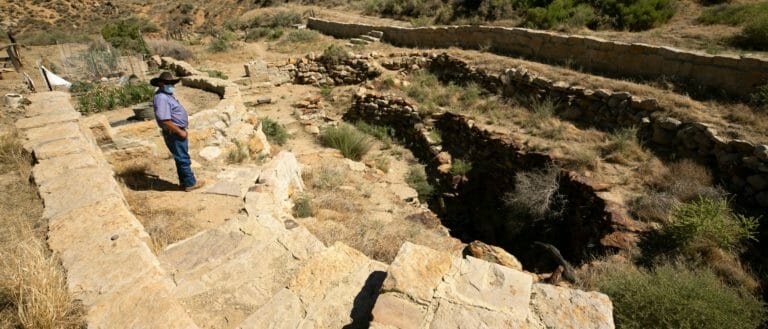Max Taylor, a Hopi Tribe water resources technician, stands near Lemeva Spring on the Hopi Reservation on July 30, 2020. The Hopi say they have used this spring for over a thousand years. DAVID WALLACE/THE REPUBLIC
The Hopi see influence of climate change — and suspect a link to coal industry’s groundwater pumping.
MISHONGNOVI — At the base of a sandstone mesa, the ground descends in a series of stone terraces and steps, forming an oval-shaped ceremonial gathering place with flat rocks arranged around a central pit. At the bottom, a pool of water shimmers in the sun.
This natural spring, called Toreva Spring, is a sacred place for Hopi people. For centuries, they have held religious ceremonies here while looking into its serene waters.
When he was a boy, Howard Dennis sat by the water during ceremonies and dangled his feet in the cool spring.
“See that little ledge right there? At the bottom, that’s how high it used to be,” Dennis said, motioning to the dry edge of the pit.
Over the past four decades, he said, the water level in the spring has dropped 8 to 10 feet.
Water still percolates out of the ground and pools in the lower portion of the spring. But Dennis fears the spring could eventually go dry, taking away the essential heart of this religious site.
The Hopi have lived for thousands of years on the mesas of the Colorado Plateau. Flowing springs and seeps have sustained them, providing sources where they have […]
Full article: ‘Everything is drying up’: As springs on Hopi land decline, a sacred connection is threatened

